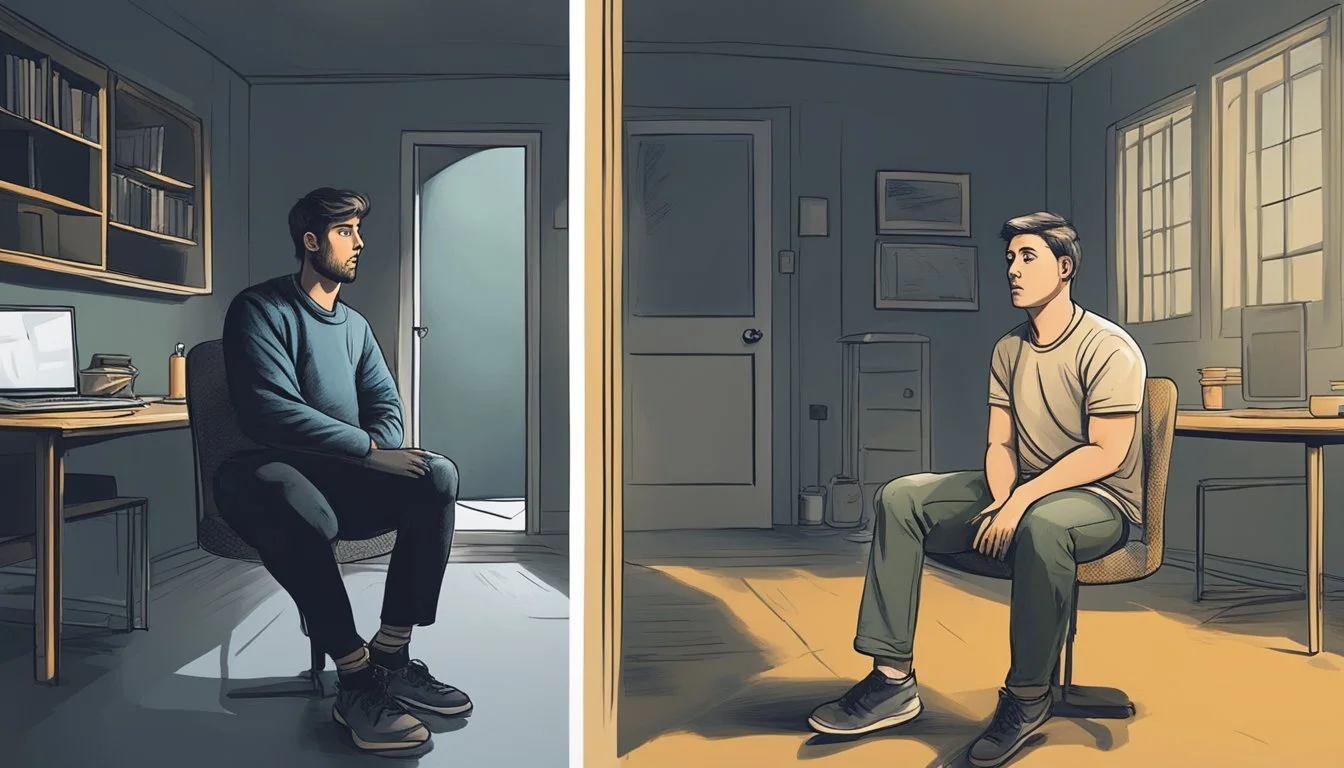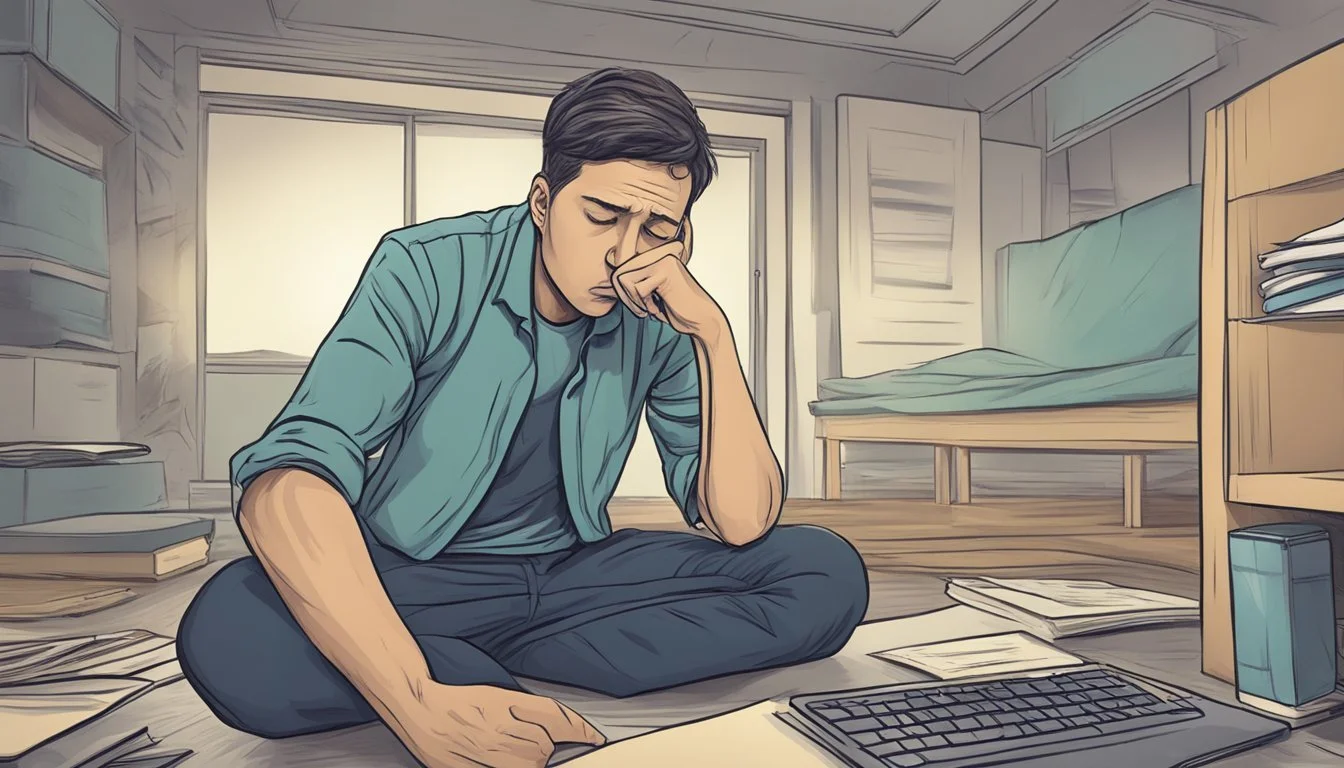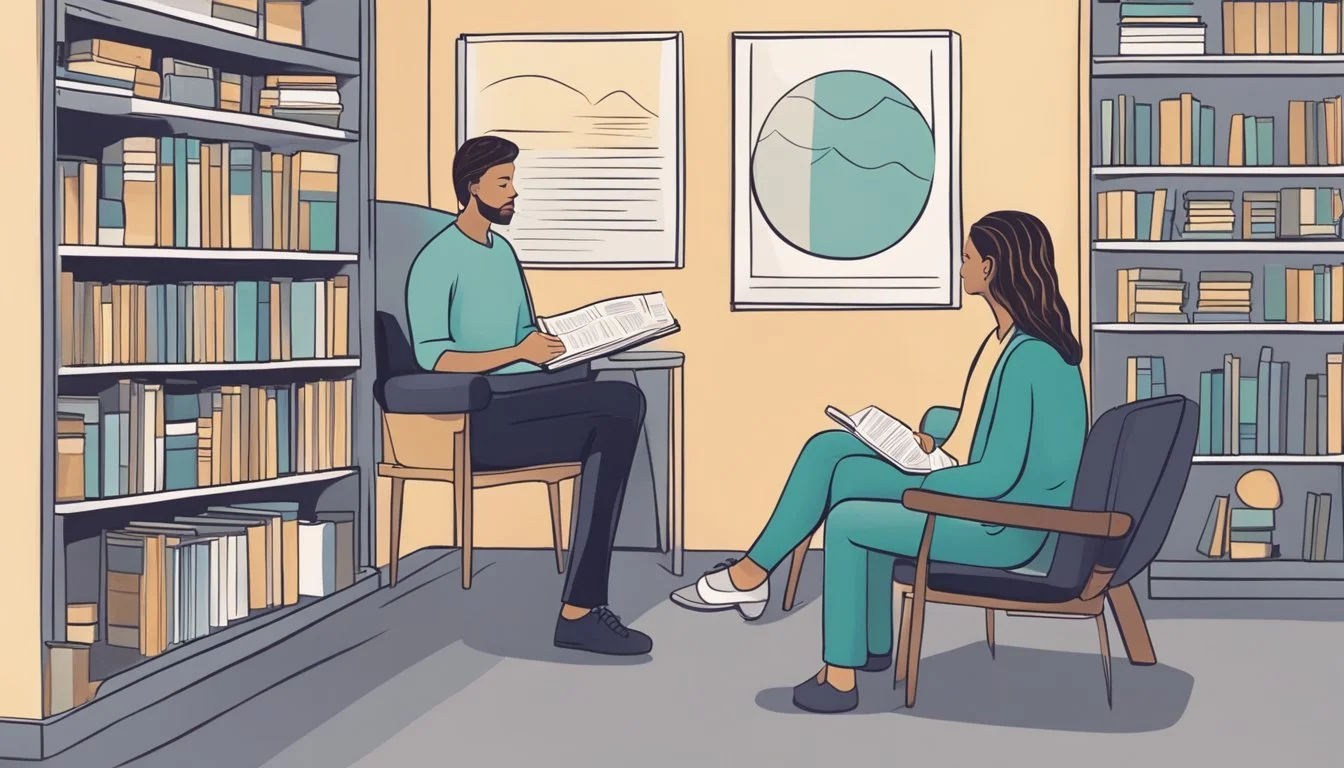5 Differences Between PTSD and Anxiety Disorders
Key Features Explained
Understanding the differences between PTSD and anxiety disorders is crucial for identifying the appropriate treatment and support. While they share some similarities, these two conditions stem from different causes and manifest in distinct ways. Recognizing these differences empowers individuals to seek tailored help for their specific needs.
Misconceptions surrounding PTSD and anxiety disorders can lead to confusion and ineffective management. By clarifying how these conditions differ, individuals can better navigate their mental health journey. This article aims to outline key differences that set PTSD and anxiety disorders apart.
1) Trauma Memories
PTSD and anxiety disorders both involve distressing memories, but the nature of these memories often differs.
In PTSD, trauma memories are typically linked to a specific traumatic event. These can manifest as vivid flashbacks, where the person feels as if they are reliving the incident.
Unlike PTSD, anxiety disorders often involve general distressing thoughts without a specific traumatic root. These memories may relate to ongoing stressors or fears.
People with PTSD may also experience uncontrollable thoughts about the traumatic event. Flashbacks can be triggered by reminders associated with the trauma.
In anxiety disorders, distressing memories tend to be more diffuse. They may not involve a singular, identifiable event but can stem from broader worries or anxieties.
PTSD often includes nightmares about the traumatic event. These nightmares can be frequent and intense, adding to the person's distress.
Anxiety disorders may cause sleep disturbances, but these aren't usually focused on a specific traumatic event. Instead, they might involve general worries that disrupt sleep.
The intensity of trauma memories in PTSD can significantly impact daily life, making it harder to focus or engage in routine activities.
2) Physical Symptoms
PTSD and anxiety disorders can both manifest through various physical symptoms. Individuals with PTSD often experience intense reactions when reminded of their trauma. These reactions can include rapid heartbeat, sweating, and muscle tension.
People with anxiety disorders may also experience similar symptoms. For instance, muscle tension, rapid heartbeat, and sweating are common. However, individuals with generalized anxiety disorder (GAD), specifically, can have chronic symptoms that persist without clear triggers.
Sleep disturbances are another physical symptom seen in both PTSD and anxiety disorders. Insomnia or frequent nightmares can affect people suffering from either condition. Concentration difficulties can also be observed, impairing an individual's ability to focus on daily tasks.
Moreover, gastrointestinal problems, such as nausea or stomachaches, are reported by people with both PTSD and anxiety disorders. These symptoms can exacerbate the overall distress experienced by individuals.
People with PTSD tend to be easily startled. Immediate physical responses to triggers distinguish PTSD from anxiety disorders. This heightened reactivity can make managing everyday situations challenging.
For more detailed information on specific physical symptoms, you can refer to additional insights provided by Pyramid Healthcare and After Anxiety.
3) Anxiety Triggers
Anxiety disorders are often characterized by a variety of triggers that can provoke intense feelings of fear and panic. These triggers can vary widely from person to person.
Common triggers include stressful life events such as job loss or divorce. Financial difficulties and academic pressures are also known to precipitate anxiety.
Social interactions can cause anxiety, especially for those with social anxiety disorder. Fear of judgment, embarrassment, or rejection during social gatherings can be significant triggers.
Certain environments, such as crowded places or noisy settings, can also induce anxiety. These environments may make individuals feel overwhelmed or trapped.
Additionally, physical health issues like chronic illnesses or persistent pain can act as triggers. The constant worry about health can create a cycle of anxiety.
Phobias are another prominent category where specific objects or situations—such as heights, animals, or flying—trigger anxiety. These phobias often result in avoidance behaviors.
Lastly, lifestyle factors like lack of sleep, poor diet, and substance use can enhance vulnerability to anxiety triggers. Maintaining a balanced lifestyle can help mitigate these effects.
Understanding these triggers is crucial in managing and treating anxiety disorders effectively. It allows for more targeted therapeutic interventions and coping strategies.
4) Flashbacks and Nightmares
Flashbacks and nightmares are common symptoms in post-traumatic stress disorder (PTSD), which distinguish it from other anxiety disorders. In PTSD, individuals often experience involuntary, intrusive memories that cause significant distress. These flashbacks can make the person feel as if they are reliving the traumatic event.
Nightmares in PTSD are more than just bad dreams. They are vivid, recurring, and often related to the traumatic experience. Such nightmares can severely disrupt sleep patterns, causing further emotional and physical stress.
While intrusive thoughts are also present in various anxiety disorders, the intensity and nature of PTSD flashbacks and nightmares are notably distinct. Anxiety disorders may not necessarily involve reliving a past event but can include persistent worry or fear about future events or general situations.
For instance, someone with an anxiety disorder might continuously worry about health or social scenarios, without experiencing flashbacks. PTSD-specific nightmares, on the other hand, re-enact aspects of the traumatic event in a way that seems all too real to the sufferer, often leading to heightened psychological distress.
These symptoms highlight the profound impact trauma has on the psyche, significantly affecting daily life and overall well-being. It's crucial to recognize these differences when diagnosing and treating PTSD and other anxiety disorders.
5) Persistent Worry
Persistent worry is a hallmark of anxiety disorders such as Generalized Anxiety Disorder (GAD). Individuals with GAD experience chronic and exaggerated worry over everyday situations. This can include concerns about health, work, social interactions, or daily responsibilities.
In contrast, worry in PTSD is typically more focused. Those suffering from PTSD often worry specifically about re-experiencing traumatic events. Their anxiety is often triggered by reminders of the trauma.
People with GAD have difficulty controlling their worries, which can lead to physical symptoms like restlessness, fatigue, and muscle tension. This persistent anxiety can significantly impact their daily functioning.
PTSD-related worry is usually accompanied by symptoms such as flashbacks, nightmares, and hypervigilance. These symptoms can make individuals feel constantly on edge and cause them to avoid situations that might remind them of the trauma.
While both disorders involve excessive worry, the nature and focus of this worry vary. Persistent and generalized worry characterizes anxiety disorders, whereas PTSD-related worry is often trauma-specific.
Understanding the differences in persistent worry between GAD and PTSD can help in identifying and treating these conditions more effectively. This distinction is important for providing targeted therapeutic interventions. For more information on how GAD and PTSD differ in symptoms, you can visit this Pyramid Healthcare article.
Defining PTSD
Post-Traumatic Stress Disorder (PTSD) is a mental health condition triggered by witnessing or experiencing traumatic events. Understanding its symptoms and causes is crucial for identifying and managing the disorder effectively.
Symptoms and Diagnostic Criteria
PTSD symptoms can significantly impact daily life. They often include re-experiencing the traumatic event, such as flashbacks and nightmares. Individuals may also exhibit avoidance behaviors, avoiding places, activities, or people that remind them of the trauma.
Hyperarousal symptoms like irritability, difficulty sleeping, and being easily startled are common. Negative changes in thoughts and mood may also occur, including feelings of detachment, depression, and severe emotional distress over the trauma.
Diagnosis typically involves a clinical assessment confirming the presence of these symptoms for more than a month, significantly impairing social or occupational functions.
Common Causes and Triggers
PTSD commonly results from severe traumatic events such as military combat, assault, natural disasters, or serious accidents. Exposure to these events, either directly or indirectly, can lead to the development of PTSD.
Trauma triggers, such as certain sounds, smells, or situations, can evoke strong memories of the event, causing intense emotional and physical reactions. Triggers are unique to each individual but are often linked to specific aspects of the traumatic experience.
It's important to note the higher prevalence of PTSD among certain groups. Women are about twice as likely to develop PTSD compared to men, and children also show significant vulnerability.
Defining Anxiety Disorders
Anxiety disorders encompass a range of mental health conditions characterized by excessive fear, worry, and related behavioral disturbances. These disorders can significantly impact daily functioning and quality of life.
Symptoms and Diagnostic Criteria
Anxiety disorders manifest through a variety of symptoms which are often persistent and can interfere with daily activities. Common symptoms include:
Excessive worry or fear
Restlessness or feeling on edge
Fatigue
Difficulty concentrating
Irritability
Muscle tension
Sleep disturbances
The Diagnostic and Statistical Manual of Mental Disorders (DSM-5) identifies specific criteria for different types of anxiety disorders. For example, Generalized Anxiety Disorder (GAD) requires excessive anxiety and worry occurring more days than not for at least six months. Social Anxiety Disorder involves intense fear or anxiety in social situations, leading to significant distress or impairment. Accurate diagnosis is crucial for effective treatment and management of symptoms.
Common Causes and Triggers
Anxiety disorders can arise from a combination of genetic, environmental, and psychological factors. Genetic predisposition plays a significant role, as these disorders often run in families.
Environmental factors such as trauma, stressful life events, or chronic illness can trigger the onset of anxiety disorders. Psychological factors, including personality traits and coping mechanisms, also influence susceptibility.
Common triggers for anxiety symptoms include stressful situations, traumatic events, and significant life changes such as moving, starting a new job, or relationship issues. It's essential to identify and understand these triggers to manage and mitigate the impact of anxiety disorders effectively.
For more information on anxiety disorders, visit Posttraumatic Stress Disorder (PTSD) | Anxiety and Depression.
Treatment Approaches
Treating PTSD and anxiety disorders often involves a combination of therapy, medication, and self-help strategies. Each approach aims to address the specific symptoms and underlying issues related to these conditions.
Therapy Options
Cognitive Behavioral Therapy (CBT) is widely used for both PTSD and anxiety disorders. CBT helps individuals identify and change negative thought patterns and behaviors. For PTSD, trauma-focused CBT is particularly effective, emphasizing coping strategies and processing trauma.
Exposure Therapy is another method, particularly beneficial for PTSD sufferers. It involves gradual exposure to the trauma memory in a controlled environment to reduce fear and anxiety responses. Dialectical Behavior Therapy (DBT) and Eye Movement Desensitization and Reprocessing (EMDR) are also used, especially for complex PTSD cases.
Medication Management
Medications can be crucial in managing symptoms of PTSD and anxiety disorders. Selective Serotonin Reuptake Inhibitors (SSRIs), such as sertraline and paroxetine, are often prescribed. These medications help by increasing serotonin levels in the brain, which can improve mood and reduce anxiety.
Benzodiazepines may be prescribed for short-term relief of severe anxiety symptoms, but they are not recommended for long-term use due to the risk of dependence. Beta-blockers and antipsychotic medications might be used in specific cases where symptoms are particularly resistant to other treatments. Mood stabilizers can also be an option, particularly for those with concurrent mood disorders.
Self-Help Strategies
Self-help strategies are essential for managing PTSD and anxiety on a daily basis. Mindfulness meditation and deep breathing exercises can help reduce stress and improve focus. Regular physical activity is crucial; exercise has been shown to reduce anxiety and improve overall mental health.
Maintaining a consistent sleep schedule is beneficial, as sleep disturbances are common in both PTSD and anxiety disorders. Social support from friends, family, or support groups can provide emotional comfort and practical advice. Journaling and creative activities like art or music therapy can also offer therapeutic benefits by providing outlets for expressing emotions.







